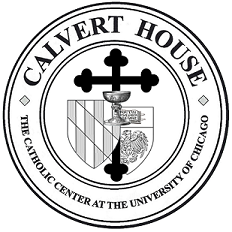Calvert House is the Catholic Center at the University of Chicago. For over eighty years, it has met the needs of Catholic students, faculty and staff who are associated with the University. As the largest religious group on campus, the Catholic population finds in Calvert House a center of liturgical, spiritual and intellectual enrichment in the faith.
The first organization of Catholics at the University of Chicago was active as early as 1901 calling itself simply “The Catholic Club of the University of Chicago.” Soon after, the club was reorganized in 1903. The name was changed to “The Brownson Club” after the nineteenth century American Catholic Orestes Brownson. It remained as such until 1923 when it was reorganized under an associate professor, Dr. Jerome Kerwin, who formally created the Newman Club for Catholic Students.
While this was happening on the campus, a group of subscribers to Commonweal magazine formed “The Calvert Club” named after George Calvert, the First Lord Baltimore and founder of the first colony in America that explicitly gave religious freedom to Catholics. In 1926 Dr. Kerwin joined the Calvert Club who subsequently “adopted” the University of Chicago Newman Club later to be known as the “Calvert Club on Campus”. From this partnership, the Calvert Foundation of Chicago was chartered as a not-for-profit organization in 1941. This group consisted of Catholic lay people having a relationship with the University of Chicago. The Calvert Foundation was then given title to Childerley Farm in Wheeling by Mrs. Frances Crane Lillie.
While this location became a center for retreats, the Calvert Foundation sought leadership for the campus. A successful request of Archbishop Stritch to assign a chaplain for the students at the University was made. The first chaplain, Monsignor Connerton, along with his associate, Fr. Thomas McDonough, secured a permanent location on University Avenue. Since that time the mission of Calvert House has remained centered on the idea of Catholic formation as the key vision of campus ministry.
